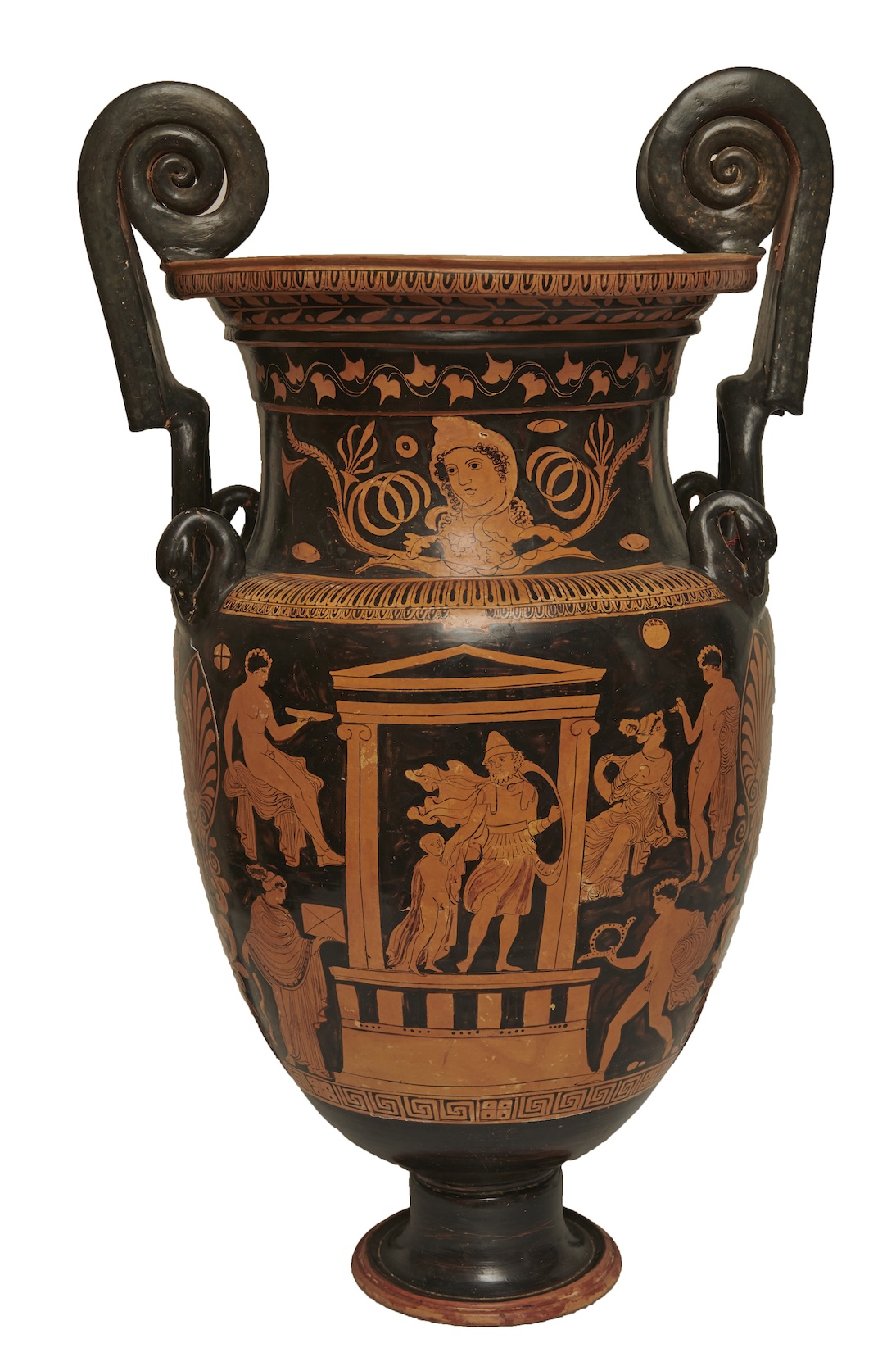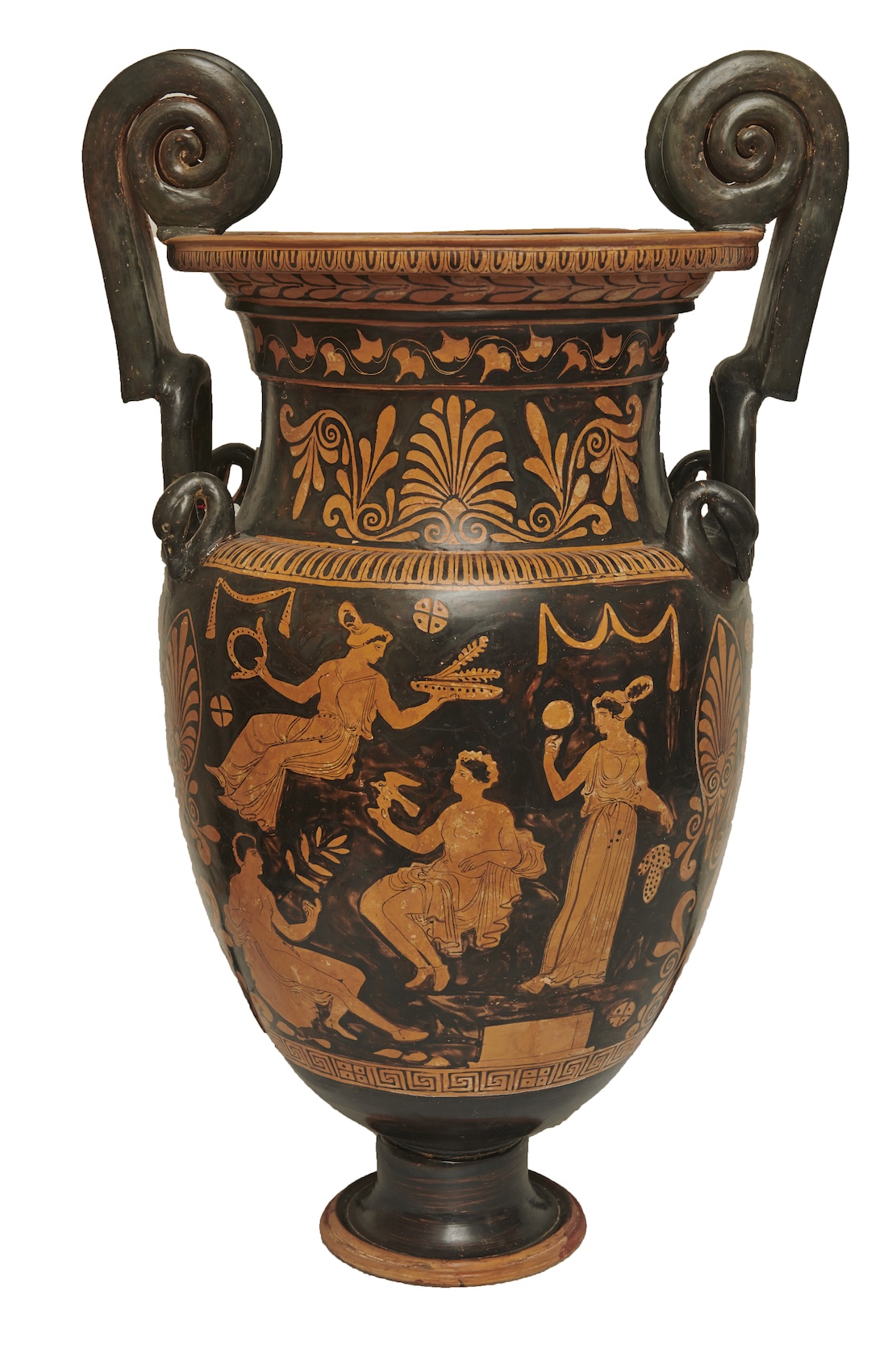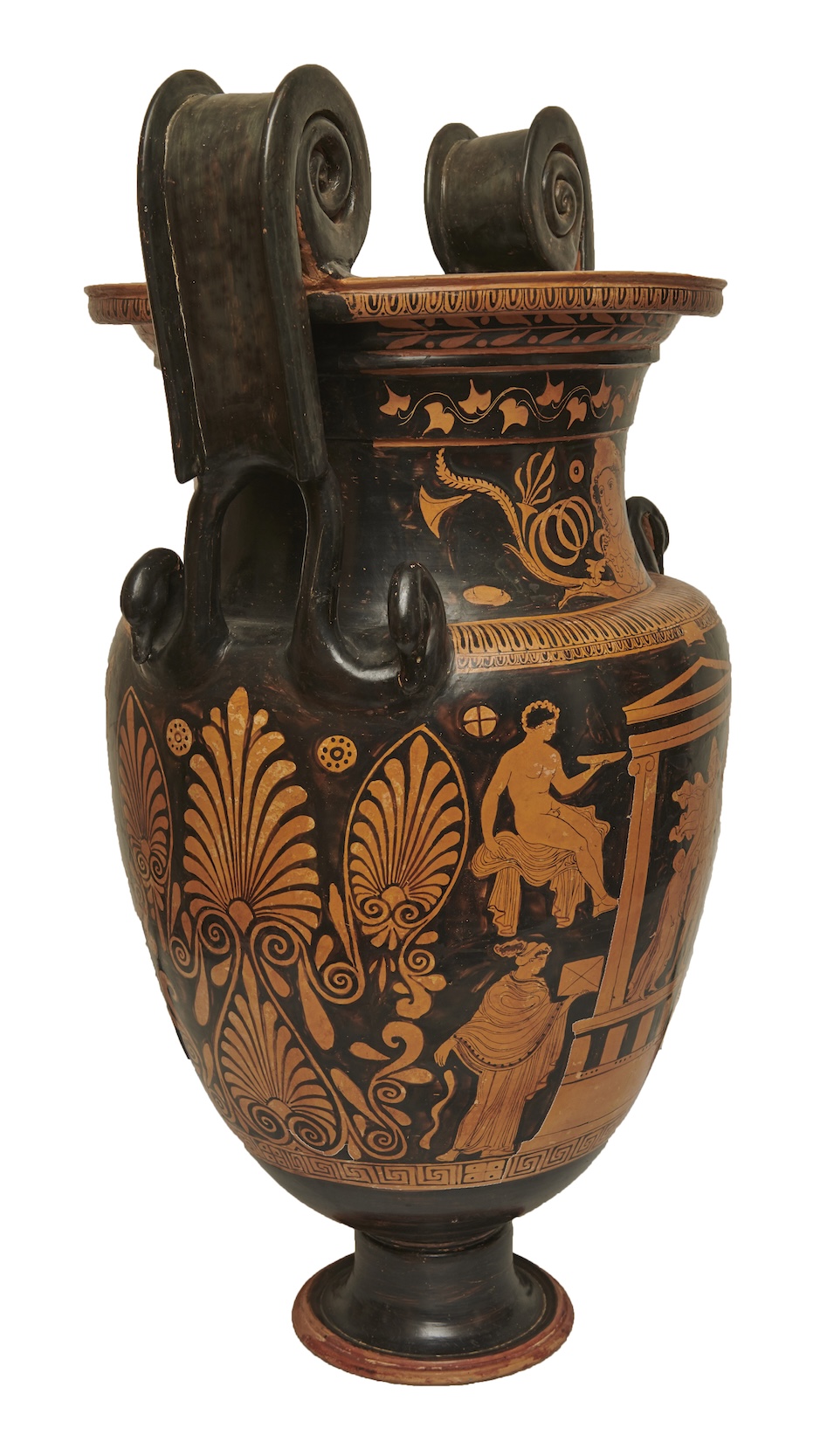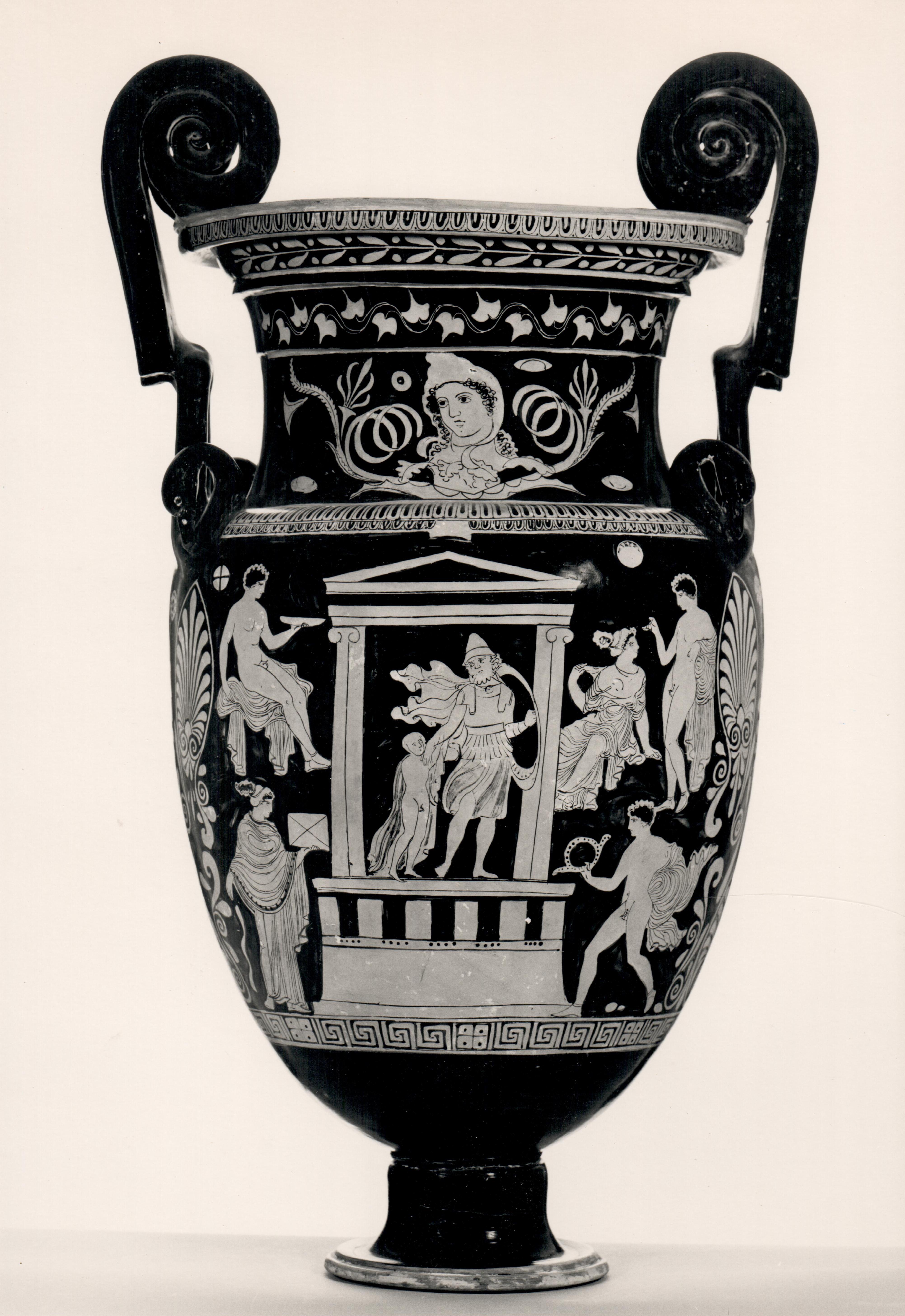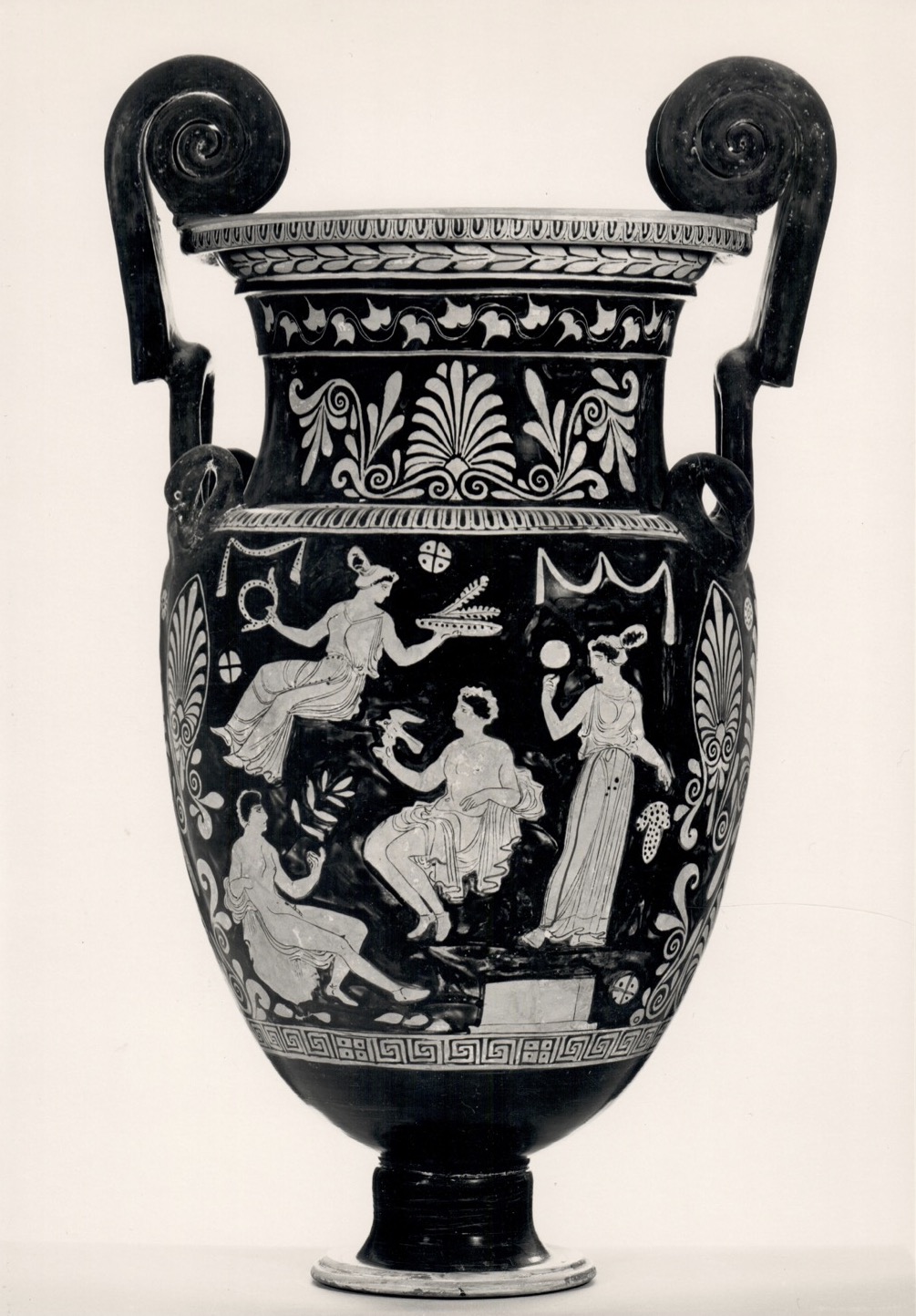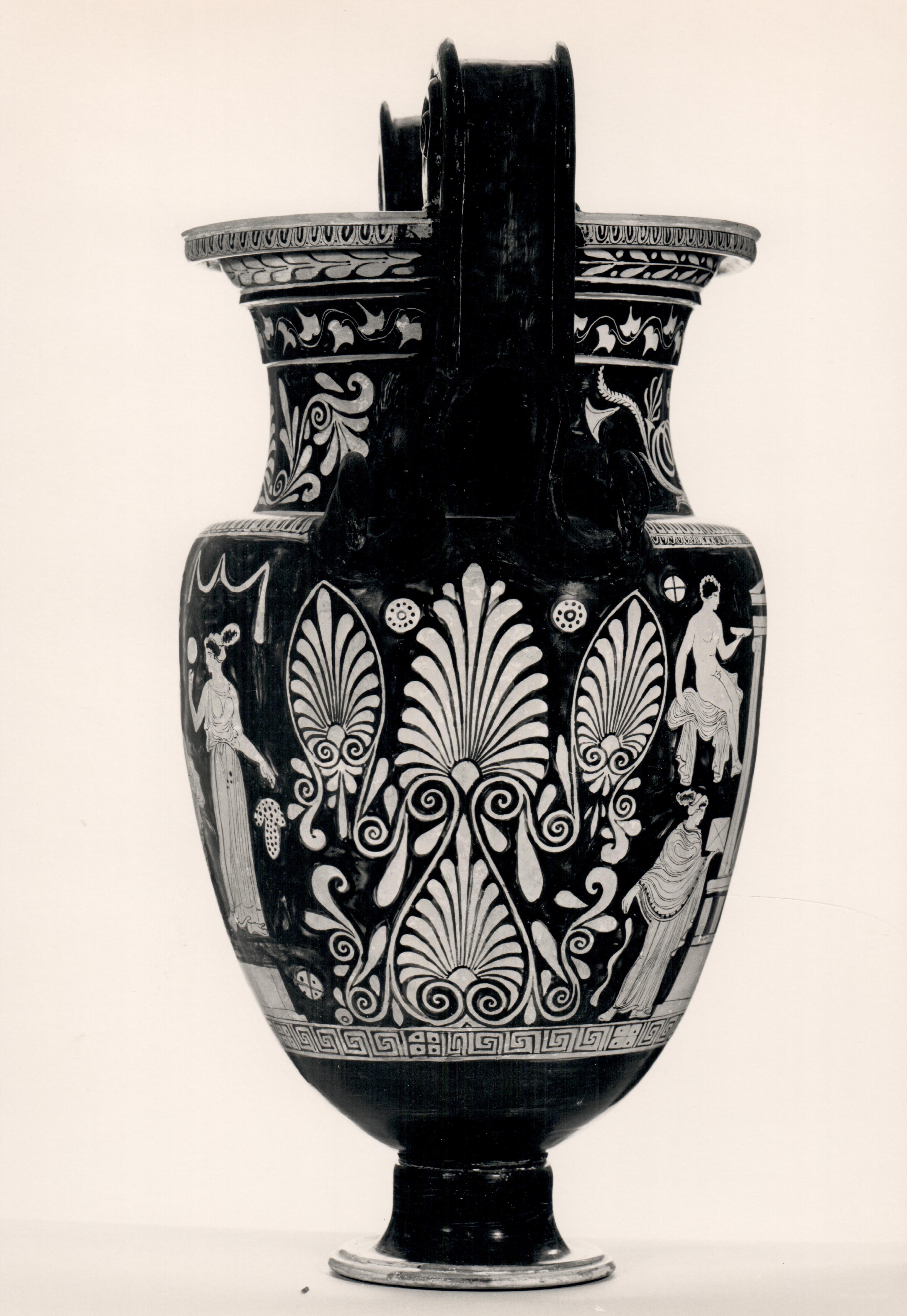Red-figured volute krater, attributed to the Iliupersis Painter
Private collection Bugli, Switzerland, prior to 1972
Private collection, Switzerland, acquired from the above on 18 April 1972
Homère chez Calvin. Figures de l'hellénisme à Genève. Mélanges Olivier Reverdin, Genève, Droz, 2000, 262 no. C25
Musée d'art et d'histoire, Genève, from 21 september 2000 until 4 march 2001
Side A: a head wearing a Phrygian cap flanked by two floral bands on the neck and ivy decoration above. The middle of the body shows a naïskos with two figures, an elderly, bearded man and a child, perhaps Aeneas and Ascanius. The scene probably depicts Aeneas fleeing the city of Troy, taking his son Ascanius with him; two figures on the left: a naked man with a phiale in his left hand and a woman holding a box; on the right, three figures: a seated woman in discussion with a standing man and a a young man running to the left below. The figures around the aedicula (naiskos), who do not belong to the myth, show that the schene is reinterpreted in a funerary context (the deceased identifies with the heroes of the epic).
Side B: two floral bands on the neck, ivy decoration below the lip and a pamette between tendrils. The body decrorated with four figures: a seated woman with phiale or basket and crown, another standing woman holding a mirror; two seated, naked man, one of them with a bird on his righ hand. This crater most probably forms a pair with an amphora by the same painter.
